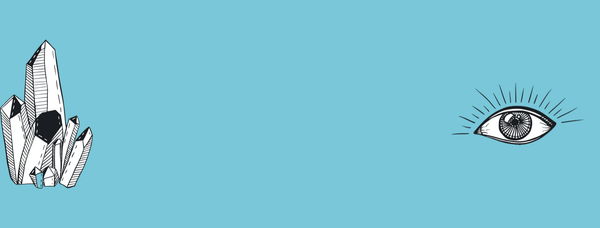Yes, Mudras Really Do Work: Here’s How

Stretching until your $120 yoga pants split? Organic juice bars? Pseudo-Eastern spirituality? Sure, you can find all of these in the westernized, watered down versions of yoga, but within this vast science are some very real tools for tapping into the wisdom of the Cosmos. Mudras, simple gestures made primarily with the human hands, have been called the ‘control center to everything,’ by modern yogis. Though they are a small part of the entire body of yogic sagacity, they are a way of changing your energy in very specific ways.
Misunderstood Mudras
Mudras are perhaps one of the most misunderstood aspects of yoga. When I first started to practice yoga more than fifteen years ago, I was considered a newbie by ancient practitioners in India, Tibet and China, but to the West I was following a strange cult. I was ‘ahead’ of the curve. Now there is a yoga studio on every corner in every major city in the US. Funny how we tend to label things before we truly understand them.
In the beginning of my yogic journey, the sheer breadth of information to absorb around the topic – asana, meditation, dhyana, pranayama, yamas, niyamas, shatkriyas, kriyas, etc. – left little room to truly study mantra. It’s a shame I didn’t find out about mudras sooner because they hold some of the most sacred science in all of the yogic literature. I say this not to promote some sacrosanct practice, but because a mudra uses your own personal physiology and sacred geometry to align your energy with cosmic forces – no joke.
It doesn’t matter if you believe in them. That would be like saying your lungs didn’t work if you didn’t believe in breathing. Whether you truly understand how they work, they do. It may seem like you are placing your hands in some funny and strange positions, thought up by some bored and retired puppeteer, but once you are introduced to the science behind them, you’ll likely want to practice your mudras more often.
A Subtle Science
Mudras, these simple hand gestures, are a subtle science. We don’t yet have the technology to measure the energetic affects of these movements, the same way we couldn’t really understand how meditation affected the brain prior to EEG and CAT scans of the brain were developed.
The way our systems functions can be altered just by changing the positions of our palms. When we hold the hands in a certain position, say in the gyan mudra, the circuitry and geometry of the body is enlisted. Meaning ‘seal’ or ‘closure’ in Sanskrit, mudras are basically closed energy circuits. Our fingers have nerve terminals connected to our endocrine glands. When the fingers touch in a certain manner, the endocrine glands receive a subtle, electromagnetic communication.
You can also look at mudras as an isometric connection that directs force from different points in the body. Though mudras are often referred to hand gestures, every yogic posture is also a form of mudra.
This is just what happens at the physical level.
On a more subtle level, mudras of any form are redirecting our energetic flow. Because sensing this change can be elusive, mudras are also often paired with pranayama (the direction of the life force energy through breathing). When paired they can be even more effective, but this should not discourage a practitioner from doing mudras without any physical augmentation. Certainly, when practicing any posture mudra or breathing technique, it helps to focus the mind on the desired results – as then we are directing consciousness from multiple levels – as the psychologist Carl Jung described.
Our limited understanding of energy and physical matter makes the explanation of mudras on an energetic level more complex and harder to prove. But, these same gestures also communicate with energies on the astral level. The subtle energy of the astral level is then communicated via the nervous system and the brain, helping us to focus our minds in the way in which the mudra intends. Since scientists still can’t agree on what makes up more than 96% of the matter in our Universe (dark matter, included) it is difficult to describe how mudras help us tap into this matter/wave, quantum level of energy.
In the same way that modern science is trying to understand how consciousness moves to another Universe (dimension) after we die, they would have similar struggles trying to understand how yogis can refine their energy so completely, that they can pinpoint a single cell in the body.
To make mudras a regular part of your yogic practice, here are a handful you can include (pun intended) to help start to shift the subtle energies of your body-mind-complex. Just keep in mind that these are most often used as a meditation in and of themselves, but you could practice them while sitting in traffic, waiting in line, or any time that you want to instill their subtle power:
Gyan mudra: The gyan mudra, also known as Vaayu-Vardhak in traditional Ayurveda raises the level of the element vayu or air in the body. It is associated with the planet Jupiter. It helps to develop spiritual awareness, calm, and peace. Artistic depictions of great spiritual masters such as Guru Nanak, Christ, Buddha and Mahavir are all shown regularly with this hand position. This mudra is created by joining together the tip of the thumb and the index finger. You may have seen this mudra most often in pictures of meditating saints and yogis sitting cross-legged with their eyes closed in contemplation. The first finger and thumb should touch tip to tip, not nail to nail in order for the nerve endings to touch. In Kundalini Yoga, Gyan mudra is most often practiced with the hands resting on the knees with the elbows straight, but Yogi Bhajan, arguably the man who brought kundalini yoga to the West, taught this mudra with many variations.
Chin mudra: This mudra is frequently adopted when practicing pranayama, specifically when practicing the ‘breath of life.’ You should place the nail of the index finger across the pad of the thumb, and extend the remaining three fingers. The palms should be facing up, and they can rest on the knees while pranayama is practiced. This mudra is often used for lower back pain, relieving stress, increasing energy and stamina, and acts as a way to create a pranic circuit through which the life force can flow more easily. This mudra stimulates the root chakra, and has no contraindications.
Shunya mudra: Shunya means ‘zero’ or ‘sky’ in Sanskrit therefore the mudra works with the etheric element all around us. To create this mudra with your hands, keep your thumb on the middle finger and allow the other fingers to remain straight. This mudra is said to help with numbness or tingling in the body, vertigo, travel sickness, deafness, and earaches.
There are literally thousands of mudras you can create with your hands, and hundreds of thousands of mudras that you can create (essentially as yogic postures). Each position works with your physical and energetic bodies to create change. Practice with persistence and you should experience improvement in your life. No $120 yoga pants required.










